An example search has returned 100 entries
-arɨgi
ianɨr

karorɨt

konianaker

Speckled blue grouper, speckled grouper (deep sea)
Example: Photo by John Turnbull / Flickr, License: CC BY-NC-SA 3.0 via Fishes of Australia
bookmarkkonquaequae

n. type of flowering plant (collection: Michael J. Balick #5036)
Example: Young plants for roof rafters, larger plants used for house posts. Women who get pregnant with someone else besides husband use this to abort. Boil a double handful of scraped stem in water and drink 1 cup four times daily to abort. Fruits are edible. Cut it open and eat what’s inside.
bookmarkkonuwak arwerew
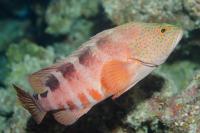
Sixblotch hind, saddle grouper (deep sea)
Example: Photo by Ian Shaw / iNaturalist.org, License: CC BY-NC 3.0 via Fishes of Australia
bookmarkkuankiriage
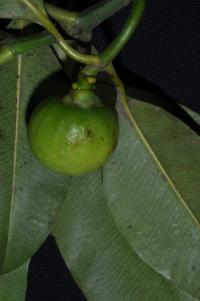
n. large, well branched tree (collection: Gregory M. Plunkett #4245)
Example: 1. The fruits are chewed for their juice and the remainder spit out. Locals refer to this as drinking the fruit. 2. The wood of the tree can be used as a post or rafter in either western-style or traditional style homes. 3. When in flower it is considered an appropriate time to clear a garden path for planting. When in fruit, it is time to plant yams in one’s garden.
bookmarkkwankɨnhi
makhum

Dusky parrotfish, swarthy parrotfish
Example: Photo by J. E. Randall, License: CC BY-NC 3.0 via Fishes of Australia
bookmarkMarama akwes

Yellow Crazy Ant
Example: Photo by givernykate / iNaturalist, License: CC-BY-NC via inaturalist.org
bookmarkmarpan

Marbled parrotfish, seagrass parrortfish
Example: Photo Philippe Bourjon / Wikimedia Commons, License: CC BY-SA 3.0 via Fishes of Australia
bookmarknamatamai

Black blotch emperor
Example: Photo by Barry Hutchins / Western Australian Museum, License: CC BY-SA 3.0 via Fishes of Australia
bookmarknamatamai

Longspine emperor
Example: Photo by Museum of New Zealand / Te Papa Tongarewa, License: CC BY-NC-ND 3.0 via Fishes of Australia
bookmarknamatamai

Orange-striped emperor
Example: Photo by Mark Rosenstein / iNaturalist.org, License: CC BY-SA 3.0 via Fishes of Australia
bookmarknamramiri

[namrami:ri] n. tree, 3 m tall (collection: Gregory M. Plunkett #3001)
Example: Fuel: Dry portions of this plant are used as firewood. Construction: The timber of this plant is used to create any part of a house. It is considered a strong wood. Hunting: Pidgeons are attracted to this plant for their fruit. As a result, hunters gather around this plant when they desire to hunt the pidgeon.
bookmarknamɨr
nare

n. type of flowering plant (collection: Michael J. Balick #5037)
Example: Kastom medicine for male impotence (big bamboo = (Nare) penis). Take six 3 in. pieces of the young inflorescence before it opens, chop it and mix with a double handful of leaves from 5047 (Alternanthera brasiliana) add water (1 liter) and squeeze in cup. Patient drinks 2 bottles/day for 1 week, avoid alcohol--whisky, rum, no kava, no tobacco. Stay away from wife or partner. 1 week passes with this treatment, man is much more potent.
bookmarknaturena

nepikesy

n. type of flowering plant (collection: Michael J. Balick #5035)
Example: Root is sold to earn money, as perfume and oil is from this. Grandparents used to dry the wood over a cooking fire in a kitchen when a person would get the flu. To help, they’d take dried and heated wood, scrape one cup’s worth into hot water, and then breathe over the steam bath. Drink water afterwards. Do thhis once a day for three days.
bookmarkniar
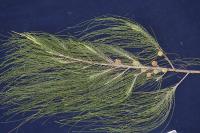
nikuhma

noufoua
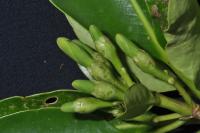
n. terrestrial tree, growing in dense cloud forest. flowers white to yellow (collection: Gregory M. Plunkett #4214)
Example: 1. The bole of this tree is used to make end posts for cyclone houses (kuipé). It is considered a strong and special wood for this purpose. 2. Stems are used as a traditional digging stick (kaker) when planting taro or kava. A smaller stick is used for the latter. 3. The wood from this tree can be used to make long-lasting fence posts.
bookmarknumasur

nurabup

nurapw
nɨmeyev

n. type of flowering plant (collection: Michael J. Balick #5060)
Example: Kastom medicine to ascertain the type of sickness a person has. Take two small 6 in. long branches with leaves, and place this on the person along with another unspecified plant. Will help diagnosis.
bookmarkpenesu

Bleeker’s parrotfish
Example: Photo by ANFC, License: CC BY-SA 3.0 via Fishes of Australia
bookmarkpenesu

Bridled Parrotfish
Example: Photo by John Turnbull, License: CC BY-SA 3.0 via Fishes of Australia
bookmarkpenesu

Filament-Finned Parrotfish
Example: Photo by Leonard Low, License: CC BY-SA 3.0 via Fishes of Australia
bookmarkrerenakuang

riuwiru
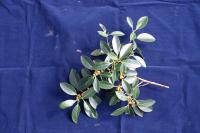
rɨsɨkai
Takiaew sei tasi
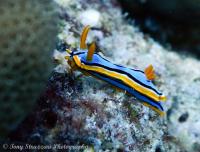
Anna’s Chromodoris
Example: Photo by tonydiver / iNaturalist, License: CC-BY-NC via inaturalist.org
bookmarktimiun

n. tree, 6 m tall (collection: Gregory M. Plunkett #4246)
Example: 1. The inner bark is used to prepared a medicine to relieve upset stomachs. First, the inner bark is scratched until a handful is produced. Then the bark is squeezed with water until a small glass is filled. The decoction is consumed to relive upset stomachs. 2. The leaves are used to fashion a poultice to heal sores and boils.
bookmarkyesu

Manybar goatfish
Example: Photo by ANFC, License: CC BY-SA 3.0 via Fishes of Australia
bookmarkyesu

Yellowstripe goatfish
Example: Photo by ANFC, License: CC BY-NC 3.0 via Fishes of Australia
bookmark










